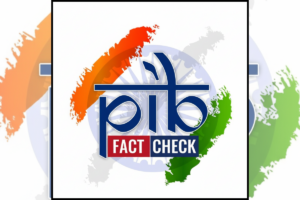
Every day, we come across situations that we believe to be wrong: a starving child, a dishonest politician, an unfaithful spouse, or a dishonest scientist. These instances draw attention to a number of moral issues, such as those involving fairness, loyalty, and compassion. But what links them all together?
Philosophers, psychologists and neuroscientists have passionately argued whether moral judgments share something distinctive that separates them from non-moral matters. Moral monists claim that morality is unified by a common characteristic and that all moral issues involve concerns about harm. Pluralists, in contrast, argue that moral judgments are more diverse in nature.
Fascinated by this centuries-old debate, a team of researchers set out to probe the nature of morality using one of moral psychology’s most prolific theories. The group, led by UC Santa Barbara’s René Weber, intensively studied 64 individuals via surveys, interviews and brain imaging on the wrongness of various behaviours.
They discovered that a general network of brain regions was involved in judging moral violations, like cheating on a test, in contrast with mere social norm violations, such as drinking coffee with a spoon. What’s more, the network’s topography overlapped strikingly with the brain regions involved in theory of mind. However, distinct activity patterns emerged at finer resolution, suggesting that the brain processes different moral issues along different pathways, supporting a pluralist view of moral reasoning. The results, published in Nature Human Behaviour, even reveal differences between how liberals and conservatives evaluate a given moral issue.
“In many ways, I think our findings clarify that monism and pluralism are not necessarily mutually exclusive approaches,” said first author Frederic Hopp, who led the study as a doctoral student in UC Santa Barbara’s Media
Neuroscience Lab. “We show that moral judgments of a wide range of different types of morally relevant behaviors are instantiated in shared brain regions.”
That said, a machine-learning algorithm could reliably identify which moral category, or “foundation,” a person was judging based on their brain activity. “This is only possible because moral foundations elicit distinct neural activations,” Hopp explained.
The group was guided by Moral Foundations Theory (MFT), a framework for explaining the origins and variation in human moral reasoning. “MFT predicts that humans possess a set of innate and universal moral foundations,” Weber explained. These are generally organized into six categories:
Issues of care and harm, Concerns of fairness and cheating, Liberty versus oppression, Matters of loyalty and betrayal, Adherence to and subversion of authority, and sanctity versus degradation.
The framework arranges these foundations into two broad moral categories: care/harm and fairness/cheating emerge as “individualizing” foundations that primarily serve to protect the rights and freedoms of individuals.
Meanwhile loyalty/betrayal, authority/subversion and sanctity/degradation form “binding” foundations, which primarily operate at the group level.
Also read: When Is Ganesh Chaturthi, Is It On 18th Or 19th September, All Details Here
Researchers created a model based on MFT to test whether the framework — and its nested categories — was reflected in neural activity. Sixty-four participants rated short descriptions of behaviours that violated a particular set of moral foundations, as well as behaviours that simply went against conventional social norms, which served as a control. An fMRI machine monitored activity across different regions of their brains as they reasoned through the vignettes.
With Inputs (ANI)
To read more such news, download Bharat Express news apps





















